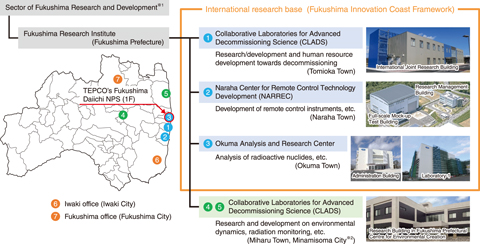
Fig.1-1 Research and development bases and office of Sector of Fukushima Research and Development
As Japan’s sole comprehensive institute in the field of nuclear energy, Japan Atomic Energy Agency (JAEA) has been engaged in research and development (R&D) of the environmental restoration of Fukushima and the decommissioning of TEPCO’s Fukushima Daiichi NPS (1F). The R&D bases of the Sector of Fukushima Research and Development are shown in Fig.1-1.
The International Joint Research Building of Collaborative Laboratories for Advanced Decommissioning Science (CLADS), the Research Management Building and the Full-scale Mock-up Test Building of Naraha Center for Remote Control Technology Development (NARREC), and the Administration Building and Laboratory-1 (currently under construction) of Okuma Analysis and Research Center are all decommissioning-related facilities that play a role in the Fukushima Innovation Coast Framework. In addition, at the Research Building (Miharu Town) and the Environmental Radiation Monitoring Centre (Minamisoma City) of the Fukushima Prefectural Centre for Environmental Creation, both of which were established by Fukushima Prefecture, R&D related to environmental restoration are underway in cooperation with Fukushima Prefecture and the National Institute for Environmental Studies.
As part of research into decommissioning, the leeching behavior of uranium from fuel debris and the elemental distribution in fuel debris were investigated (Topics 1-1 and 1-2, respectively), and remote analysis techniques were developed for in situ analysis (Topic 1-3) to contribute to the removal of fuel debris. Because the radiation dose in the damaged reactor building of 1F is still high, most of the work must be carried out using remote controlled equipment. To verify the operability of this remotely operated equipment, a test field simulating the on-site environment (Topic 1-4) and a video analysis technique to help the operator of the remotely operated equipment understand the on-site conditions (Topic 1-5) were developed. From the viewpoint of radiation control, estimation of distribution and speciation of cesium, a major source of radiation, in the reactor building are being carried out (Topic 1-6). In addition, to evaluate the safety of radioactive waste storage, the behavior of hydrogen production by water radiolysis in the waste was investigated (Topic 1-7). Collaborative research with international organizations has helped to clarify the progress of the accident and estimate the situation inside the damaged reactor (Topic 1-8).
In environmental restoration research, a number of studies were conducted to elucidate and predict the migration of radionuclides released by the accident (Topics 1-9, 1-10, 1-11, 1-12, 1-13, 1-14, 1-15). In parallel, a comparative study with the Chernobyl disaster was carried out based on the reassessment of dose rates immediately after the accident (Topic 1-16), which contributed to the retrospective estimation of exposure doses at Fukushima. Furthermore, the off-site distribution of radioactive materials was compiled as a map and made available on the internet (Topic 1-17). The external exposure of residents was assessed (Topic 1-18), and this information is provided to the government for the release of the difficult-to-return zones.
Efforts to promote R&D of environmental restoration and the decommissioning by concentrating expertise are ongoing, as is the active dissemination the findings. JAEA aims to contribute to the reconstruction of Fukushima by building a network among local companies and research and educational institutions to revitalize local industries and develop human resources.
<Previous: About This Publication and the JAEA Organizational Outline | Next: 1-1>